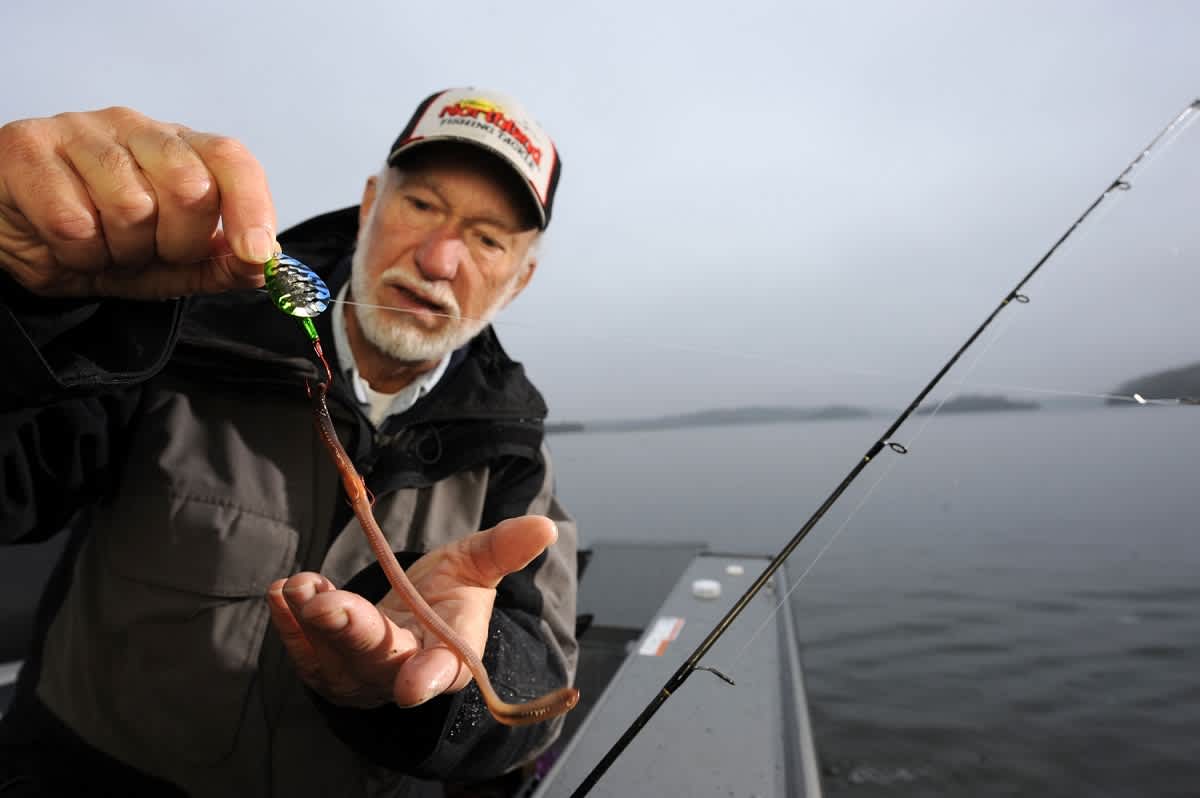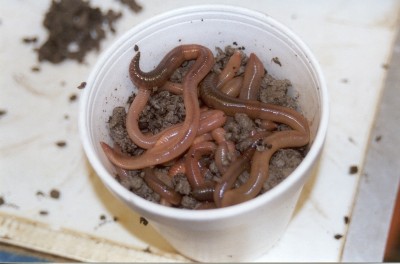DIY Garden Hackle
Dan Armitage 05.14.14

Remember those walks to school after a spring shower, when you could hardly take a step on sidewalk or driveway without risking squishing a worm underfoot? Across much of North America, that time is here, when gathering a season’s worth of garden hackle is as easy as picking dandelions.
There are some tried and true methods for finding worms and nightcrawlers up on top for easy pickins. But first, you need to know when and why worms come to the surface in the first place.
“They come up to eat, breed, and poop,” according to angler Jeff Kolodzinski in a frank but descriptive assessment of the three urges that draw nightcrawlers to the land’s surface: food, mating, and defecating.
“The best picking happens right after a thunderstorm, particularly after dark, and then again at daybreak after an overnight rainstorm,” continued Kolodzinski, who represented Frabill fishing products as part of his role at Johnson Outdoors.
“You don’t need any special red lights to sneak up on them or lightning-fast reflexes, either,” he added. “They’re right there in front of you. Just grab them.”

The peak worm-gathering season comes shortly after the ground thaws each spring—and the peak of the peak is after spring’s first hard rain and clapping thunderstorm. In more southern climes, crawler time is anytime you can walk the neighborhood following a rain event. Spring, however, tends to produce the largest volume of crawlers no matter where you live.
According to Kolodzinski, you don’t need to organize worm collecting safaris near a garden center where the soil is fortified with Canadian sphagnum and alpaca manure, either. With a decently soft and fertile loam, preferably associated with sod or a forest edge, about all you need is a bucket, a decent flashlight, and a keen set of eyes.
“Streets, sidewalks, paths—it really doesn’t matter. When nightcrawlers come up, they aren’t very particular about what the ground feels like,” said Kolodzinski, who then debunked a popular urban legend. “Somehow, someway, some people have it in their minds that crawlers picked up off asphalt or concrete don’t live long, their body skinned and scathed. That’s a myth. Take good care of them and they can last for months.”
Care is crucial. You can spend an entertaining evening plucking bait with the kids and all is for naught if they turn into a rotting ball of compost overnight. A hot night in the garage is all it takes. Ever whiffed molten crawlers? If not, save yourself the retching experience.
As passionate as Kolodzinski is about harvesting and using nightcrawlers as bait, he’s equally as fanatical about keeping the critters alive and wiggling for future use when the pickin’ isn’t so easy.
“On a good night, you can collect hundreds of nightcrawlers,” he said. “Based on street value, that translates into a lot of savings for the fisherman. Think about bait like an investment and you’ll have the right mindset for being a crawler caretaker.”
Long-term caretaking of crawlers concerns four core elements: food, bedding, aeration, and temperature. With regard to the latter, Kolodzinski claims that 50 degrees Fahrenheit is the optimum temperature for storing earthworms.
No matter which brand of bedding you use, “make sure it’s 100 percent biodegradable and blended for long-term stays,” he advised, adding that most commercial brands will provide 30 days of comfort with full occupancy before needing a change of bedding. Kolodzinski, in fact, claimed that nightcrawlers can live “indefinitely” in a well-managed environment, where they will breed and provide you with an unlimited supply of one of the world’s best fishing baits.

